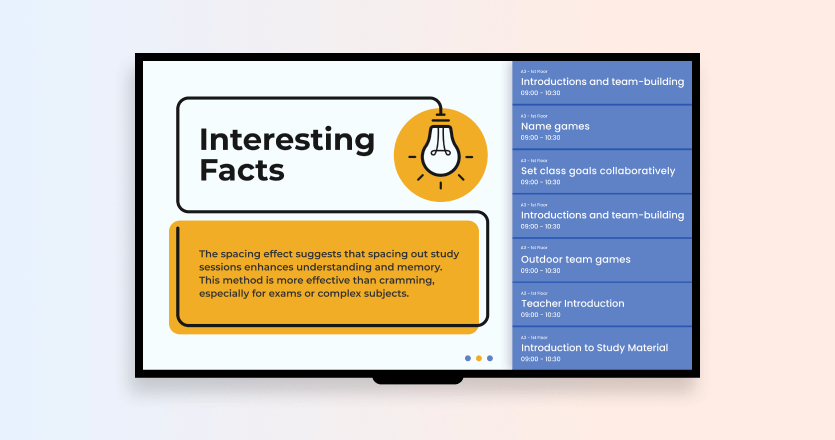The quest for inclusive educational signage has gained momentum in the rapidly evolving learning landscape. Let’s begin today, on the International Day of Education, by creating an environment where every student feels valued. Fostering a positive learning experience is crucial, regardless of background or abilities.
In this journey toward inclusivity, digital signage emerges as a powerful tool, offering innovative ways to engage and support diverse student populations.
The Foundation of Inclusive Education
Before diving into the role of digital signage, it’s essential to understand the foundations of inclusive education. At its core, inclusive education is about providing equal opportunities for all students, irrespective of their differences. This encompasses diverse learning styles, abilities, cultures, and backgrounds. In an inclusive setting, students with disabilities, those from different cultural backgrounds, and those with varying academic capabilities learn together, side by side.
Challenges in Educational Spaces
Traditional educational spaces often present challenges to achieving true inclusivity. Physical barriers, communication gaps, and limited resources can hinder the learning experience for many students. Moreover, adapting teaching methods to cater to diverse needs becomes a complex task in conventional classrooms.
Yodeck’s digital signage emerges as a dynamic solution to overcome these challenges. By seamlessly integrating technology into educational spaces, institutions can enhance inclusivity and create an environment that caters to the needs of every student.
Accessibility and Universal Design
Digital signage allows for implementing universal design principles, ensuring that information is accessible to all students, regardless of their abilities. By incorporating features such as text-to-speech capabilities, adjustable font sizes, and high-contrast displays, digital signage accommodates a wide range of learning needs. This ensures that students with visual or auditory impairments can access information effortlessly.
Moreover, digital signage facilitates multilingual communication, breaking down language barriers and providing information in diverse languages. This is especially crucial in culturally diverse educational settings where students come from various linguistic backgrounds.
Customized Learning Experiences
One key advantage of digital signage in education is its ability to facilitate customized learning experiences. Educators can use digital information boards to present content in different visual, auditory, or interactive formats to cater to varied learning preferences. For example, students who learn better through visuals can benefit from dynamic infographics and videos, while those who prefer interactive activities can engage with touchscreen displays or gamification elements.
Digital signage also allows for real-time updates, ensuring current and relevant information. This is particularly beneficial for students who require regular updates or modifications to their learning materials due to individualized education plans.

Fostering Communication and Collaboration
Inclusive education thrives on effective communication and collaboration among students, the teacher, and parents. Digital signage is a communication hub that disseminates essential announcements, event schedules, and educational resources. It becomes a platform for fostering community within the educational institution.
Through interactive displays, students can participate in collaborative learning activities, sharing their perspectives and ideas. This promotes inclusivity and prepares students for the collaborative nature of the modern workforce.
Real-World Applications
Several educational institutions have successfully implemented digital signage to enhance inclusivity. For instance, schools have used digital displays to broadcast sign language tutorials, making it easier for hearing-impaired and non-hearing-impaired students to communicate effectively. Additionally, colleges have employed interactive displays in libraries to create inclusive study spaces, allowing students with different learning styles to access information in ways that suit them best.
In a Nutshell
In creating inclusive educational signage, digital emerges as a transformative tool. Its versatility in accommodating diverse learning needs, fostering communication, and supporting collaboration positions it as a key player in shaping the future of education. By embracing digital signage, educational institutions can take a significant step towards ensuring that every student, regardless of their abilities or background, can thrive in a truly inclusive learning environment.
Some History…
The United Nations declared January 24 the International Day of Education to recognize education’s vital role in peace and development. Achieving gender equality and ending poverty requires inclusive, quality education for all. Currently, 250 million children and youth are not in school, and 763 million adults are illiterate. This violates their right to education, and we must work to transform the education system.
“Education breeds confidence. Confidence breeds hope. Hope breeds peace.” – Confucius
